‘Timble, that pretty little village which nestles so snugly amongst the sheltering trees after you have braved the bleak winds in crossing Snowden Moor…’
For a thousand years, no matter how wildly the winds of the world have blown, Timble has drifted along at its own leisurely pace. Despite being just a few short miles from significant towns like Otley and Harrogate, it has the feel of somewhere remote, secluded, detached from the worries and woes of civilization
It’s a place where change happens slowly. If it weren’t for the cars, a villager of two hundred years ago could find themselves transported to the present and be none the wiser.
In his 1885 work, The History & Topography Of The Townships Of Little Timble and Great Timble, local historian William Grainge wrote that ‘the district had not been distinguished for deeds of heroic virtue nor rendered notorious by crime. They possessed no great baronial halls, no battlefield of historic note, no noble monastic establishment, and so their history consists of a chronicle of small things.’
Small things perhaps. But the village and its people certainly do not lack character, and Timble has left its own little mark on the world…
Back to the beginning - the origins of Timble
Grainge wrote of Timble, ‘Though of undoubted antiquity, we have few traces of the village or its inhabitants in pre-historic times.’ While the Romans occupied the region area (a road from Ilkley to Aldborough passes close to Timble), it seems they had no reason to linger in our particular little vale.
But Timble is indeed antiquated. It was first mentioned in the Domesday Book of 1086, under the lordship of King William (the Conqueror). Back then, it was part of the Forest of Knaresborough, and would have been surrounded by trees rather than the open fields you see today.
It’s one of the few settlements listed in the Domesday Book with the same spelling used today. It was occupied by a mere six villagers who were to plough the land. Nether Timble (today known as Little Timble) was actually the larger, more established settlement.
The 1379 poll tax shows that around 70 people lived in the village at this time, as it grew into an agricultural settlement.
The etymology of Timble is unclear, but perhaps the most plausible theory is that the name was derived from ‘timmer’, the Norse word for timber. This was presumably given due to the timber-built houses. This became ‘timmel’, and was then softened in the Norman-French style to become ‘Timble’.
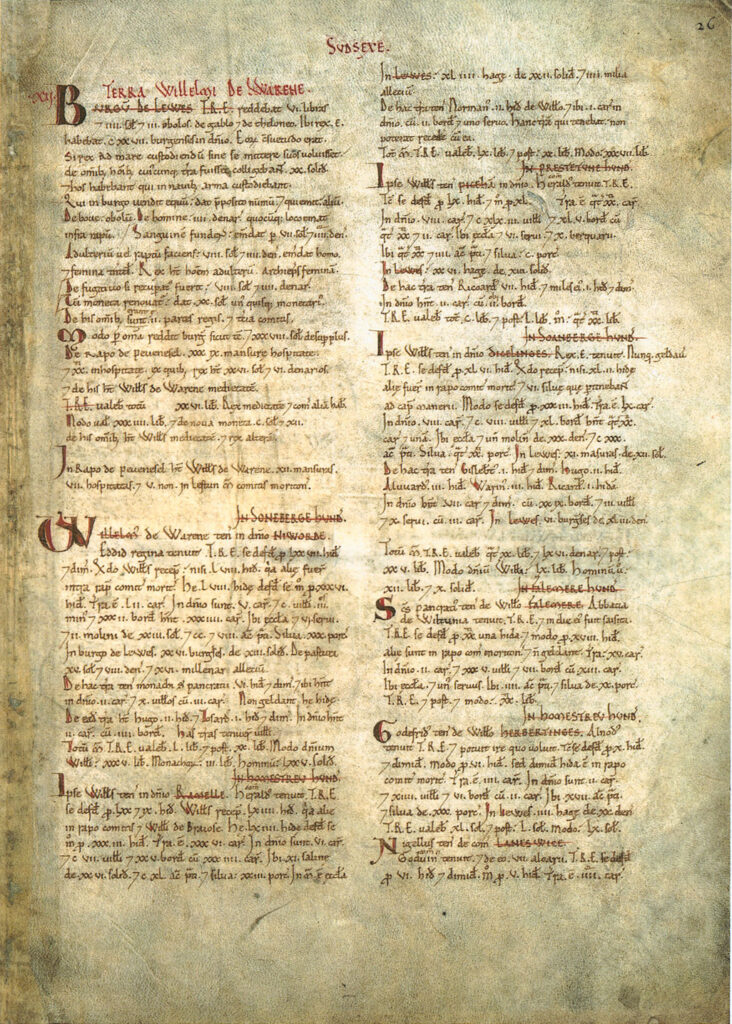
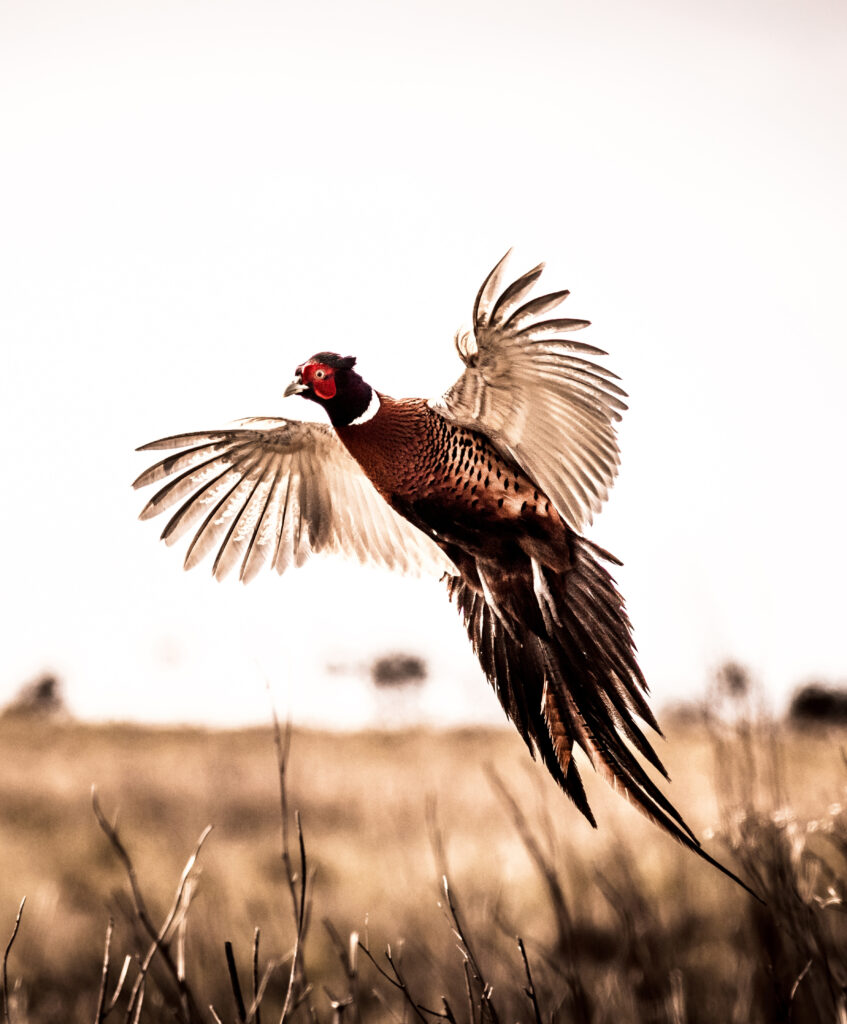
Forests, freedom and fighting
In the centuries following its origin, the lordship of Timble frequently changed hands as part of the Honour of Knaresborough. This title was created around 1130, and was often given to one of the monarch’s favoured noblemen (along with Knaresborough Castle).
An early notable Lord was Hugh de Morvile, one of the four knights who assassinated the Archbishop of Canterbury, Thomas Becket (later canonised as St Thomas of Canterbury). John of Gaunt, the founder of the House of Lancaster also held the Honour.
In 1177, the Forest of Knaresborough was declared a royal hunting park, but the inhabitants were allowed to retain possession of their lands and make their living how they saw fit (provided they didn’t interfere with the King’s sport, of course). This was unusual, and allowed the people of the area a greater degree of freedom and autonomy than their equivalents in other parts of the country. They were even granted exemption from tolls across the kingdom.
The people valued this freedom highly. In 1439, when the Archbishop of York tried to impose tolls on them in the market towns of Otley and Ripon, the Foresters didn’t take kindly. When the Archbishop sent an army into the forest in 1441, he no doubt expected the folks to cough up. Instead, they routed the army and kept their freedom.
This valour didn’t go unnoticed. Men of the region were often summoned to fight in the many wars that raged through the centuries, both at home and ‘on the rugged hills of Scotland and the sunny plains of France’, according to Grainge.
The Scots raided the village of Timble in 1318, and made regular incursions into the Forest. Eventually, enough was enough, and in 1446, Sir William Plumpton of Knaresborough led the men of the Forest to the Scottish borders under the Earl of Northumberland.
They also bled during the War of the Roses. Plumpton, fighting under Northumberland for House Lancaster, led them into the Battle of Towton, often considered the bloodiest battle fought on British soil.
Life in Timble
In addition to Grainge’s ‘chronicle of small things’, Timble Man: Diaries of a Dalesman, is another invaluable source of insight into life in the area. The diaries of John Dickinson, a local stonemason and registrar, cover the period from 1878 to 1912 and were published in 1988. It’s a fascinating and at times, amusing read.
The people of Timble had deep roots. Families such as Lister, Holmes, Pullan, Dickinson and Thackwray endured for centuries – long lines of farmers, stonemasons, carpenters or blacksmiths. These families had branched out and spread to the nearby villages in great numbers.
Every year, they would all converge on Timble for the Summer festival. This country tradition had been enjoyed for generations. Each year, a nearby village would assemble their finest men and engage in a fiery quoit contest against the Timble fellows – it seems Burley were the main whipping boys, with the Timble team thrashing them on no fewer than five occasions. Entertainment was always lively, with plenty of music and dancing, shooting ranges, and the Victorian classic, Aunt Sally. And on one occasion, according to Dickinson, two Frenchmen with a dancing bear! Of course, festivities would always continue into the evening at The Timble Inn.
Like many agricultural villages, life was largely dictated by the weather. Winters were particularly brutal. Often the village would be cut off by deep snow for days on end and water supplies would freeze up. While Timble was usually reasonably sheltered from wind, the great gale of 1839 stripped all the buildings of their thatched rooves, after which they were replaced with slate.
Religion played a prominent role in life, as was typical for the time. The Wesleyan Chapel, built in 1835, served as a Sunday School. They had visits from the odd travelling preacher, while baptisms, marriages and burials were held at the church at Fewston. As you might expect, villagers held fairly conservative values – although such a picturesque setting did always lend itself to romantic strolls and rolls around in the hay. Dickinson’s recollections of his amorous adventures make for an interesting read.
A rather unusual affront to the villagers’ traditional leaning occurred in 1902. Dickinson was summoned back to the village because a male lodger at his Aunt Mary’s insisted upon dressing as a fine lady every day. This caused great agitation among the villagers, and a raid upon the house was imminent. Dickinson and his group managed to eject the fellow before the villagers caused him harm, and he rode off on his bicycle into the night.
Other than the Inn, the village had two more communal buildings. One was the Wesleyan Chapel, now used for weddings held at the Timble Inn. The other was a gift from a man who was raised in Timble but made his mark across the pond…
‘One of the most important and beneficial days in the history of Timble was the 2nd of August, 1892, when the new public building, consisting of School, Library and Concert Hall, was opened and formally dedicated to the public of Timble and its neighbourhood.’
He was referring to the Robinson Gill Library and Free School, which is now the Village Hall directly opposite the Inn. It was built by John Dickinson, the ‘Timble Man’, and funded by Robinson Gill, who was raised in Timble and schooled at the chapel. He made his fortune in America, opening a stoneyard by the Hudson River before becoming the president of two banks.
As well as a place for educational and social pursuits, the folks had another reason to be grateful for the construction of the library. The area in front of the inn where the Library now stands was formerly a stagnant pond. Unfortunately, this pond was said to have been the last resting place for many cats and dogs, and therefore often gave off an offensive stench!
The opening of the Library was a great event in the village’s history, and another of Nidderdales’s finest exports was in attendance. Robert Collyer was raised in nearby Blubberhouses and trained as a blacksmith before becoming a Methodist minister. He too moved to America, where he was a prominent preacher and anti-slavery advocate, eventually becoming one of the country’s most respected pastors. Folks from as far as Ilkley, Morley and Leeds heard his rousing speech at the opening ceremony, on what was wonderfully described as ‘one of the reddest of red letter days in the history of the township’.
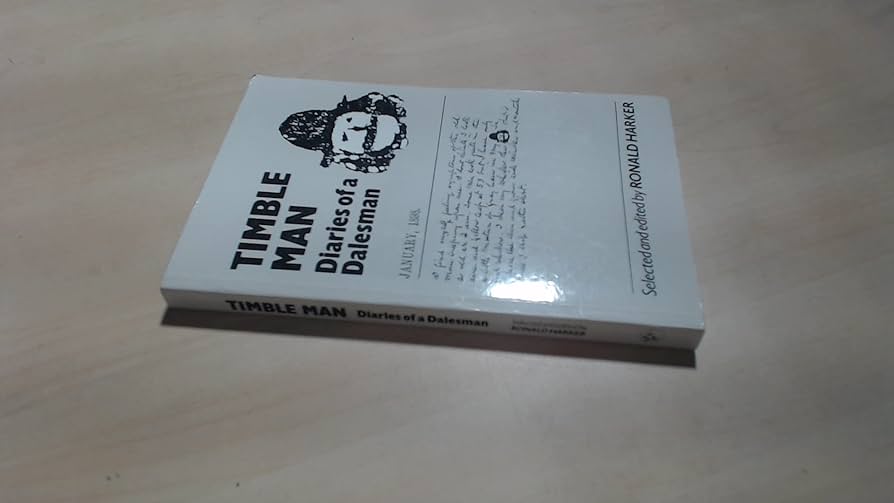
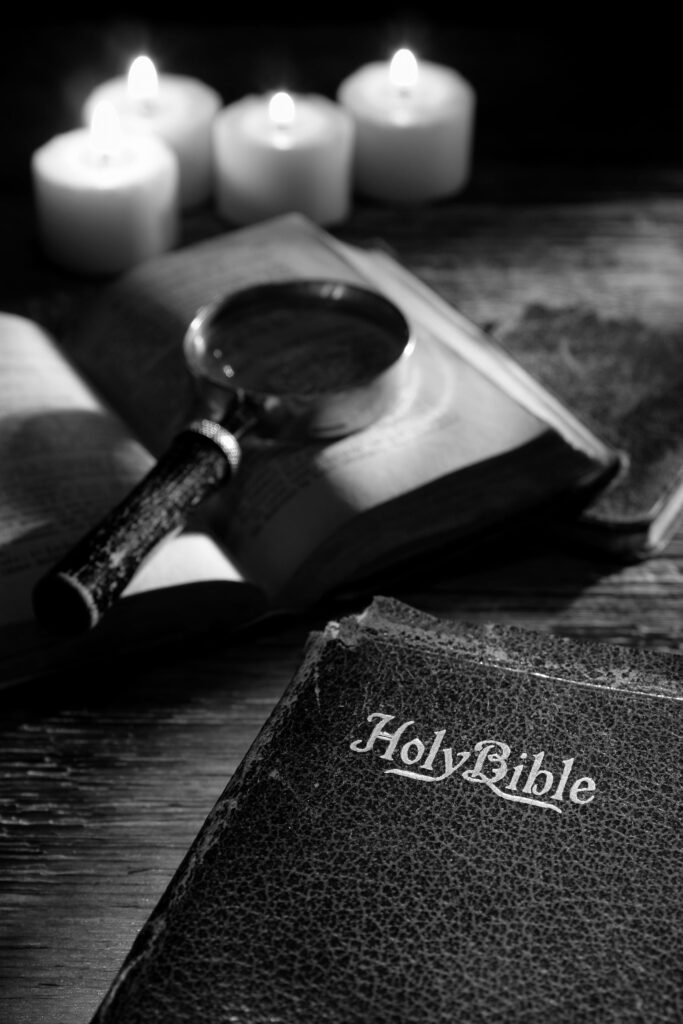
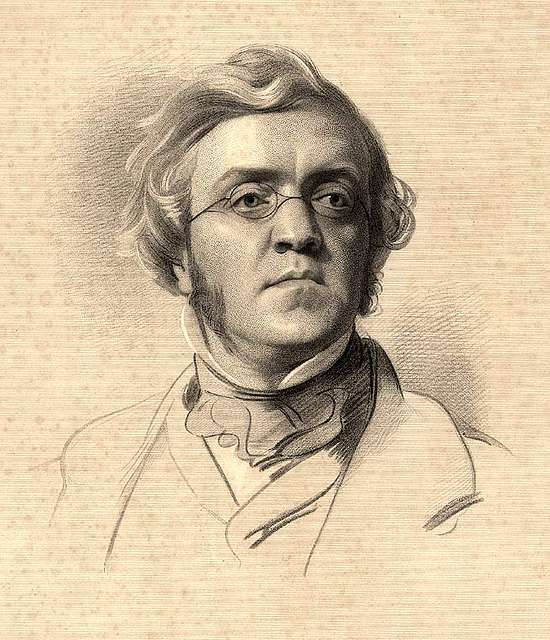
A literary note
Bibliophiles will be familiar with the surname ‘Thackeray’. Indeed, William Makepeace Thackeray, author of Vanity Fair, is believed to have descended from Timble, as the name originated here. A William de Thackwra appears in the 1379 Poll Tax rolls. It was a place name derived from the Old Norse word for ‘thatch’ (thack) and ‘nook’ (ra). Perhaps, Jerome Thackwray, an 18th century inhabitant known as the ‘Timble Poet’, passed on his literary gene.
Timble Witches
Every swathe of moorland has its own snippets of folklore.
The Fairfaxes were a prominent and influential Yorkshire family. Edward Fairfax, the notable poet and translator, lived at New Hall (later to be demolished and its remains submerged beneath Swinsty Reservoir).
Around 1620, Fairfax’s elder daughters began having strange visions and trances around Timble and Fewston. Fairfax believed a coven of six witches was responsible. Following the death of his infant daughter, Ann, he compiled Daemonologia: A Discourse of Witchcrafte As It Was Acted in the Family of Mr Edward Fairfax of Fuistone. In the book, he recounted many of the alleged supernatural encounters and made several accusations towards the women.
One such claim was that they feasted with the Devil by the Timble Gill (interestingly, a man named Wardman was murdered by a blow with the butt of a gun on the exact same spot. ‘His restless ghost afterwards haunted the scene of his murder, terrifying travellers who were so unfortunate as to pass that way after nightfall,’ according to Grainge.)
Fairfax twice had the witches brought to assizes at the court in York. However, both times they were acquitted, and the people of Fewston and Timble were actually more sympathetic to the so-called witches than they were to Fairfax. Was this because the townsfolk were unusually enlightened for their time? Or did the witches have them all under their spell?
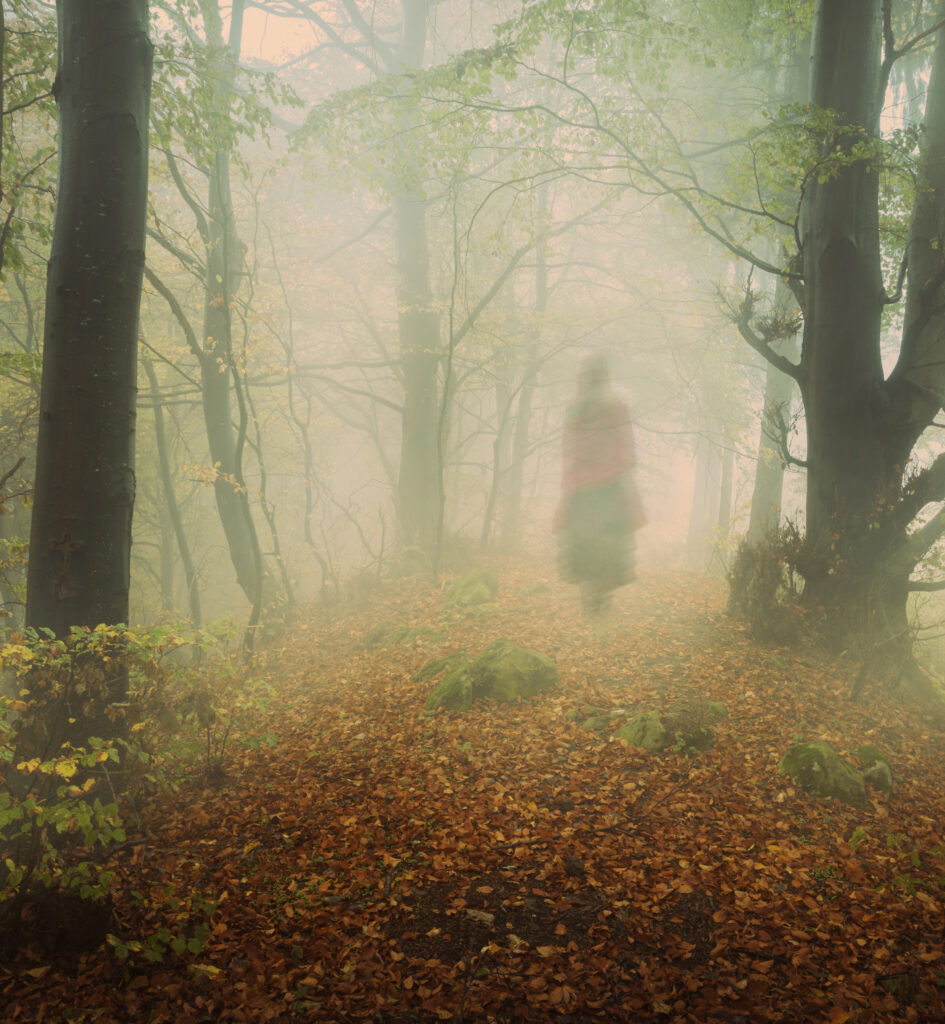
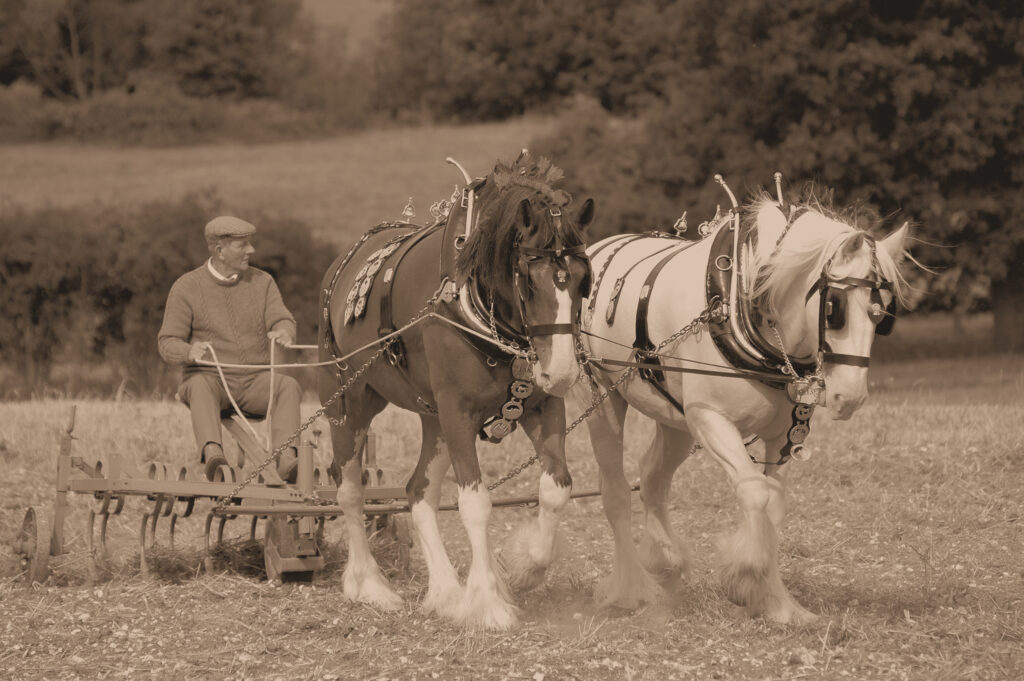
Rural decline
Like most rural villages, the advent of technology brought decline. More people moved to larger towns for work, and developments in agricultural machinery meant fewer farm workers were required.
John Dickinson, the Timble Man, witnessed this decline first-hand, and several of his diary entries throughout the late 19th and early 20th century comment on it. Indeed, he moved to Otley in 1900 as he ‘felt out of the run of things at Timble.’ At the time of his birth, the population of Timble was around 175, but by the 1911 census, just 94 were registered here. In a 1946 newspaper article on the retirement of Laura Wildsmith, the last of the Lister family to run The Timble Inn, the population was said to be a mere 30-35.
Escape to the country
Nowadays, the population has recovered slightly, and hovers somewhere around the hundred mark, although figures differ depending on where the boundaries are drawn. Many of the old farms have been converted into luxurious properties, and residents continue to enjoy the serene and scenic surrounds, which have remained almost identical for hundreds of years.
As ever, the Inn remains the beating heart of the village, welcoming people from all over the world. Nestled snugly among the trees, it’s the perfect base from which to explore the wonders of North Yorkshire.
Why not check our availability and plan your country escape today?
P.S. If you’re interested in local history, a visit to the Washburn Heritage Centre at Fewston Church is a must. It’s a scenic half-hour stroll from the inn, and you’ll receive a friendly welcome from the volunteers in the tea room. You can also find more fascinating insights into Dales life in their archives.
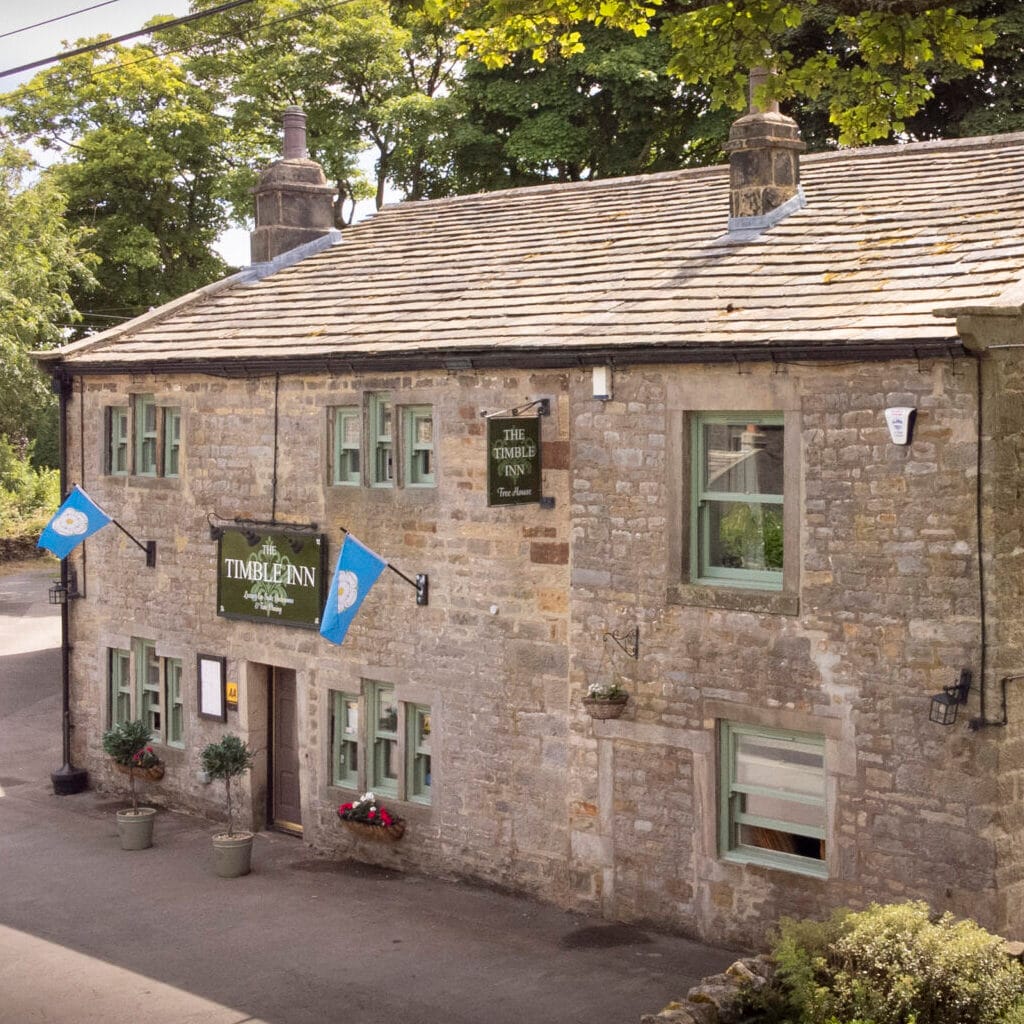
OUR ROOMS
Comfortable, relaxing and with touches of luxury. Our individual 5 AA Star Gold Award Winning rooms combine period character with contemporary country living design.
PLEASE NOTE – UNTIL THE END OF SEPTEMBER, SATURDAY EVENINGS ARE NOW ONLY AVAILABLE ON A DINNER, BED & BREAKFAST RATE. THE RATE QUOTED INCLUDES A £100 CREDIT TOWARDS YOUR EVENING MEAL.
GET IN TOUCH
- 01943 880530
- info@thetimbleinn.co.uk
- The Timble Inn, Timble, North Yorkshire LS21 2NN
